Have you ever stared into the darkness and wondered what creatures are out there, thriving in the moonlight? Picture this: a tiny primate with saucer-like eyes and the agility of a gymnast, leaping from branch to branch in the heart of the jungle while the world sleeps. The tarsier, a mysterious marvel of evolution, is a nocturnal superstar whose very existence seems to defy the ordinary. With its expressive face, astonishing hunting skills, and ghostly presence, the tarsier is proof that some of nature’s most amazing wonders come in the smallest packages. Let’s dive into the enchanting world of the tarsier and discover why these pint-sized primates are evolution’s ultimate masterpieces.
What Exactly Is a Tarsier?
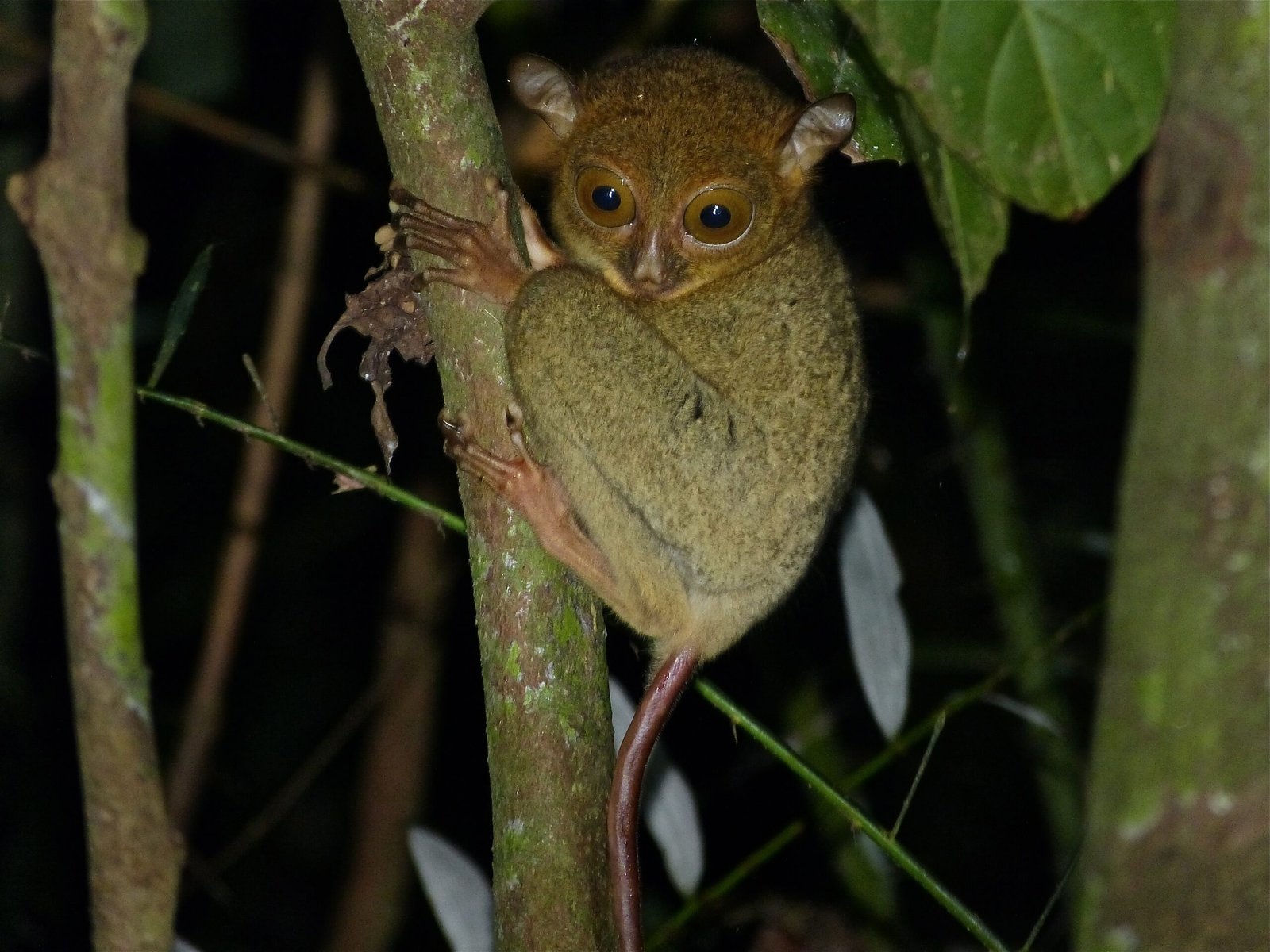
Tarsiers are small primates that almost look like they were dreamed up in a fantasy novel. With their tiny bodies, elongated fingers, and round, expressive eyes, they stand out in the animal kingdom. These creatures are native to Southeast Asia, found in places like the Philippines, Borneo, and Sumatra, and they belong to the family Tarsiidae. While their ancestry stretches back millions of years, today’s tarsiers are a rare blend of ancient traits and modern adaptations. Despite their minute size—often weighing just as much as a bar of chocolate—their presence in their forest homes is impossible to ignore.
The Marvel of Those Enormous Eyes
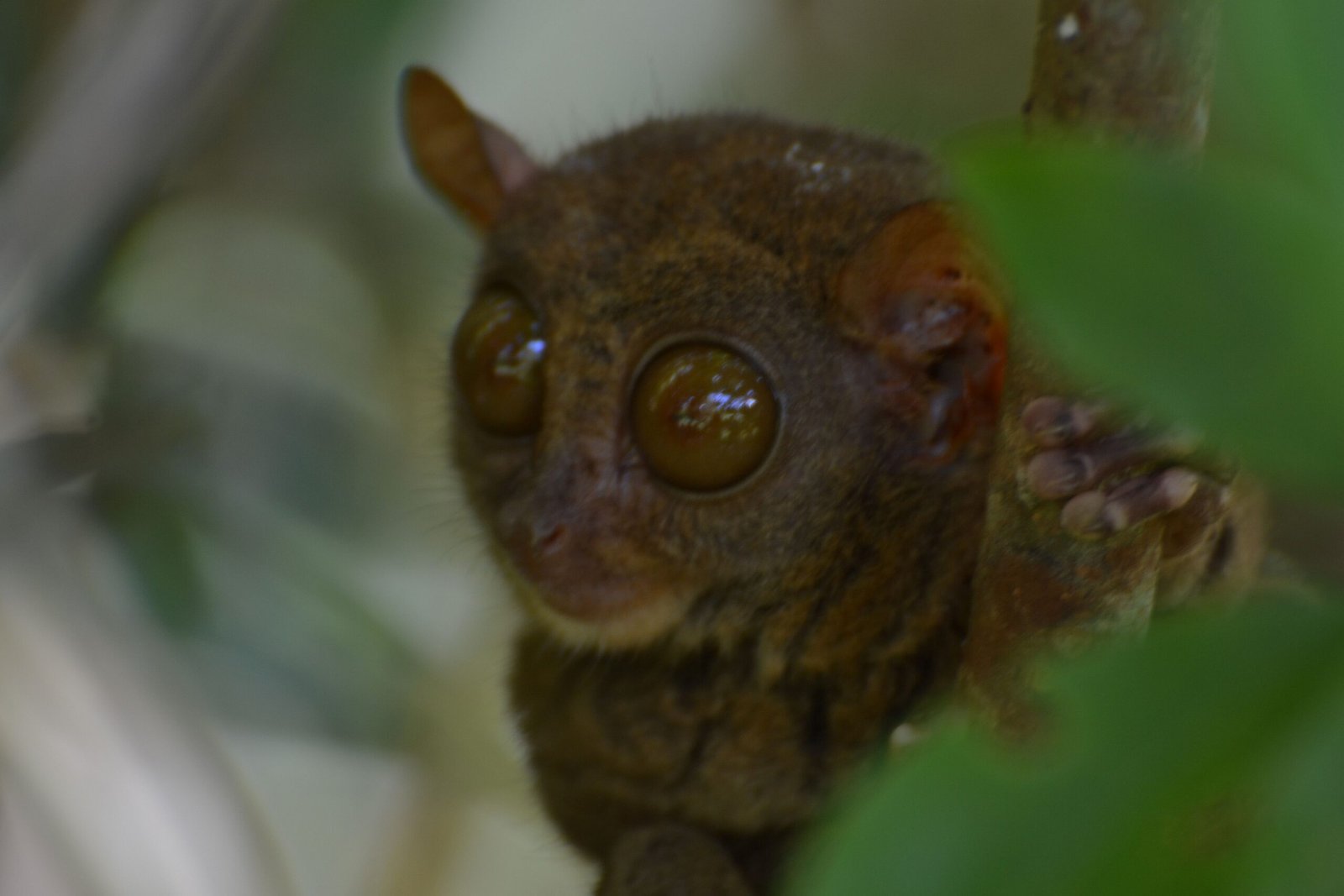
The very first thing you’ll notice about a tarsier is its eyes—giant orbs that seem almost too large for its head. Each eye is about the same size as its brain, which is wild to imagine! This isn’t just for show; those massive eyes are specially adapted for seeing in near-total darkness. Unlike most mammals, tarsiers can’t move their eyes in their sockets, so they’ve developed the ability to twist their heads a full 180 degrees, owl-style, to spot prey or predators. Their night vision is so acute that a tarsier could spot the twitch of an insect from several meters away, even under the faintest moonlight.
Navigating the Night: Tarsier Behavior After Dark
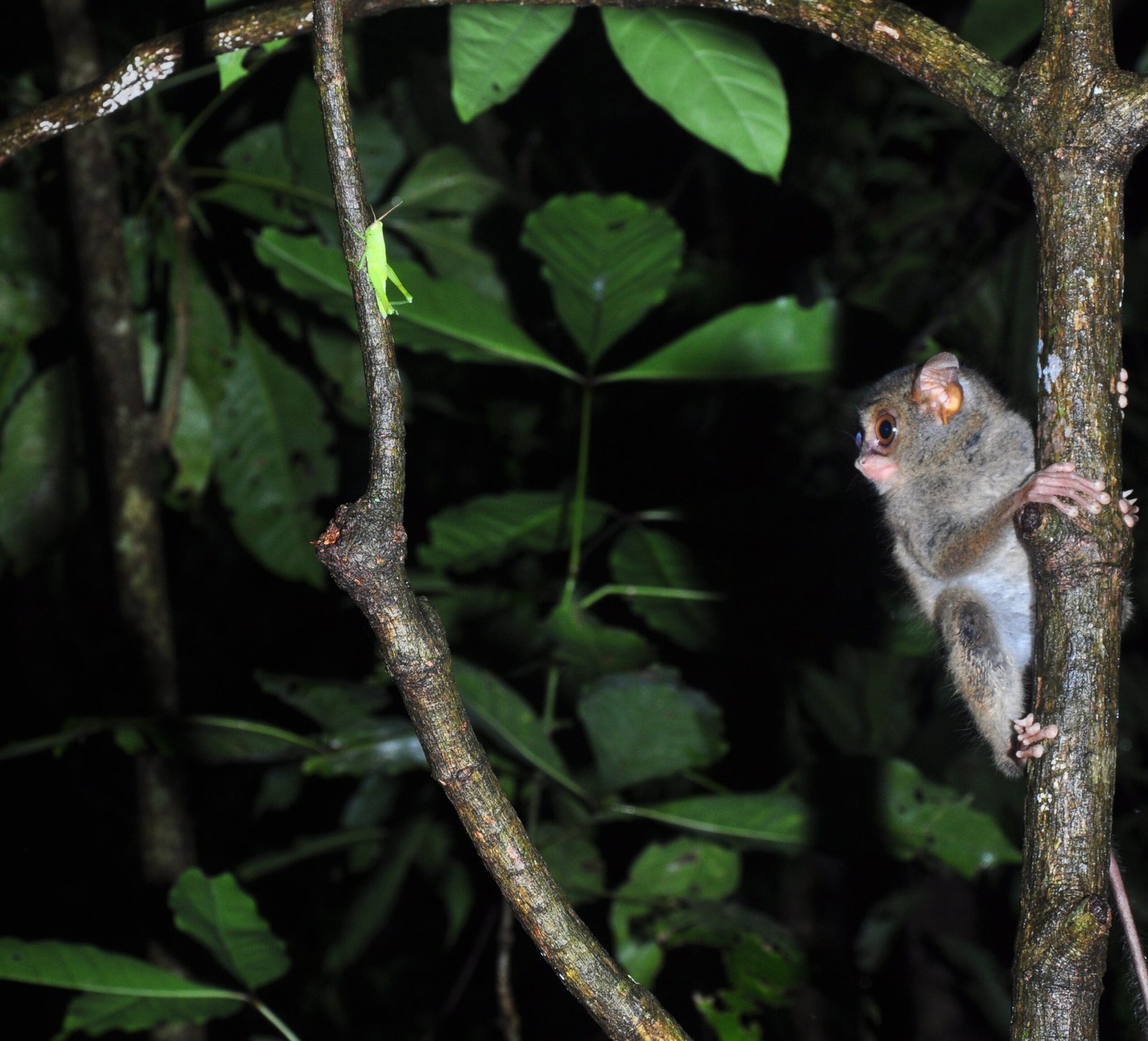
When the sun dips below the horizon, tarsiers come alive. Their nights are filled with energy and activity as they dart through the dense canopy, searching for food. Tarsiers are solitary hunters, relying on stealth and silence to catch their prey. They tend to avoid the hustle and bustle of the day, preferring the cool, quiet hours of the night. Their senses—especially hearing and vision—are finely tuned for detecting movement in the dark, helping them survive in a world where danger can lurk behind every leaf.
Leaping Legends: The Tarsier’s Gravity-Defying Jumps
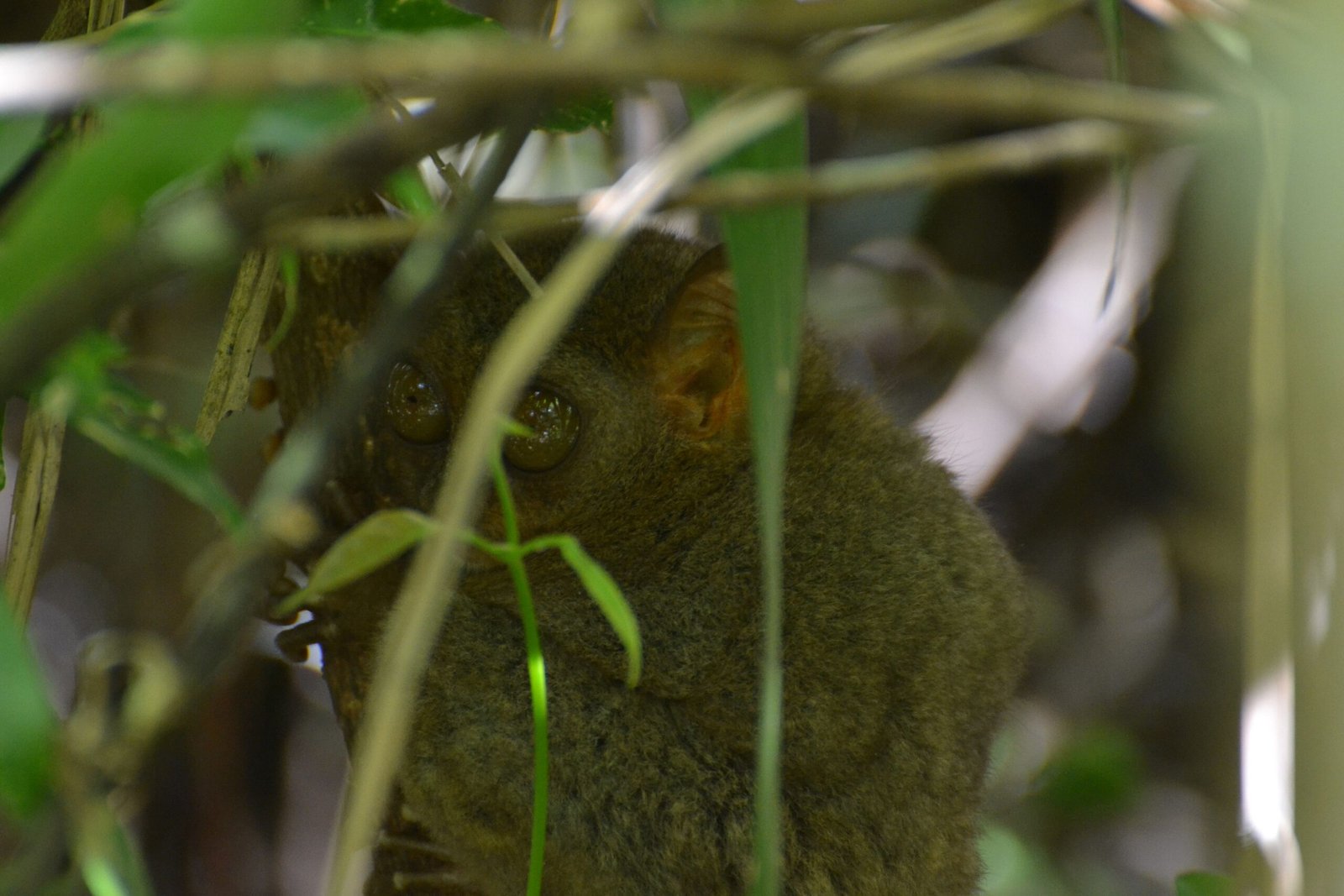
Tarsiers are renowned for their extraordinary leaping abilities. With legs that are proportionally longer than those of a kangaroo, these primates can launch themselves distances more than forty times their body length! It’s a bit like watching a miniature superhero in action. Their powerful hind limbs act like springs, letting them jump from tree to tree with precision and grace. This acrobatic talent helps them snatch up prey and avoid predators, making them one of the most agile animals in the treetop world.
Diet: Tiny Hunters with a Fierce Appetite
Despite their cute appearance, tarsiers are fierce hunters. They are the only entirely carnivorous primates, feasting on a menu of insects, spiders, and even small vertebrates like lizards and birds. Tarsiers use their keen senses to track down prey, then pounce in a flash, grabbing their meal with razor-sharp teeth and nimble fingers. Watching a tarsier hunt is a lesson in patience and precision—each movement is calculated, swift, and shockingly effective.
Communication: Whisperers of the Jungle
Tarsiers may be small, but they have a surprisingly sophisticated way of communicating. They use a combination of vocalizations, scents, and even ultrasonic calls to interact with each other. Some tarsier species can produce sounds too high-pitched for humans to hear, allowing them to “talk” without alerting predators or prey. Their calls can range from soft chirps to piercing screams, each with its own meaning—whether it’s a warning, a mating call, or a way to mark territory.
Family Life: Raising the Next Generation
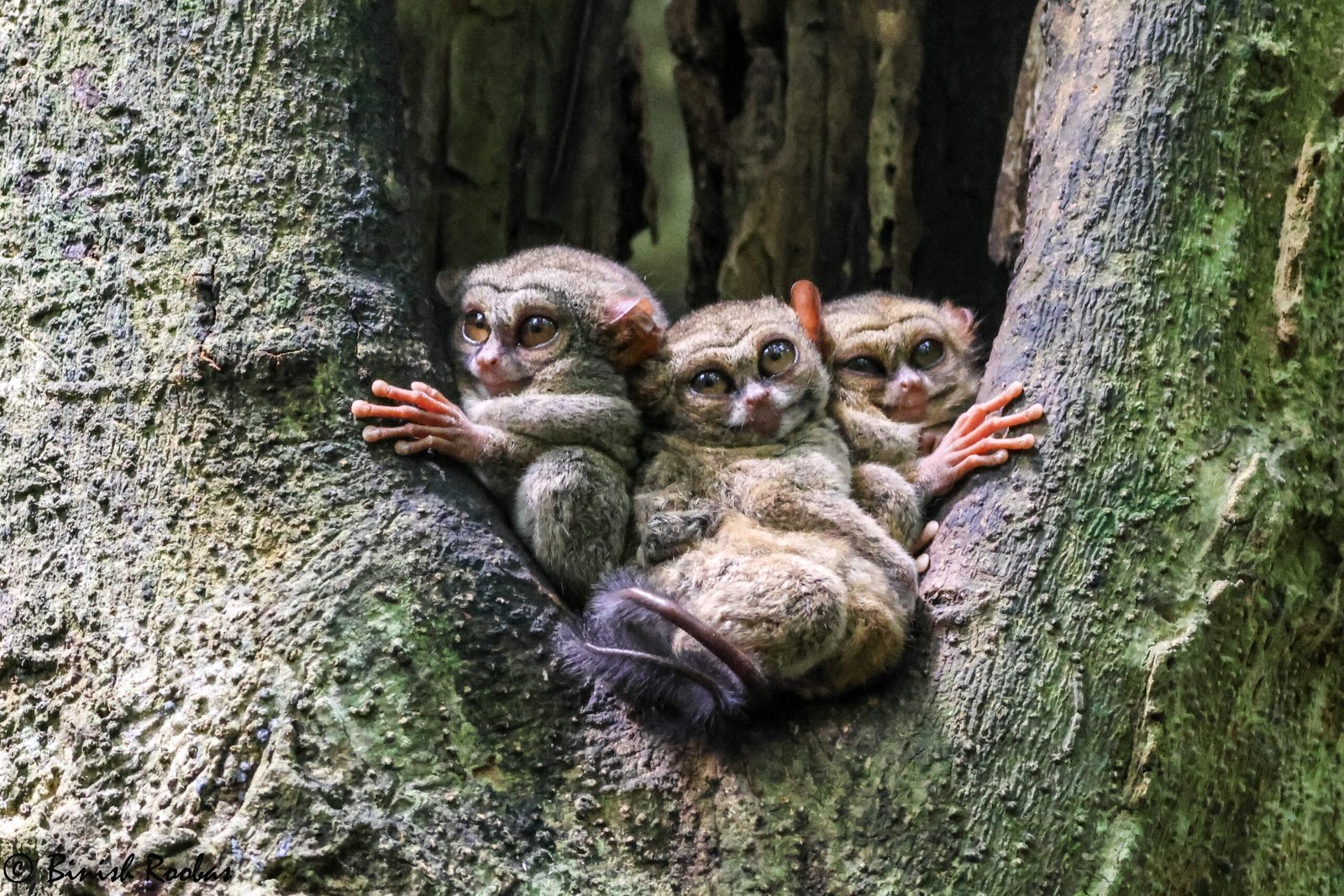
Tarsier parenting is a tender affair. Mothers usually give birth to a single baby after a long gestation period, and the newborn is surprisingly well-developed—born with open eyes and the ability to cling to branches right away. The mother will carry her baby in her mouth or on her body, keeping it safe from harm. Tarsier infants grow quickly, learning to leap and hunt under the watchful eye of their mothers. Family bonds are strong, and even though tarsiers are mostly solitary, mother and child share a close connection in those early weeks.
Evolution’s Masterpiece: A Living Fossil
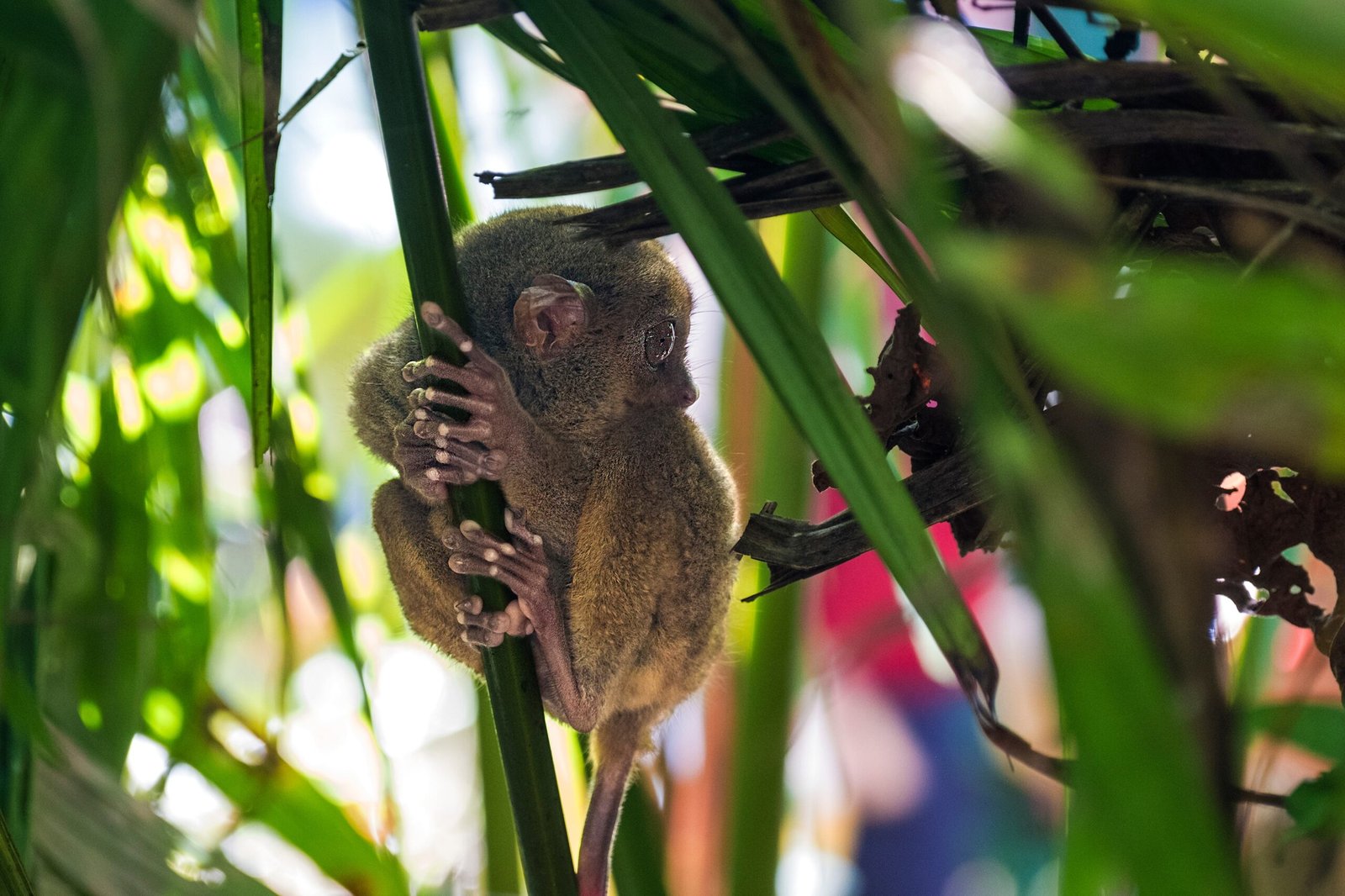
Tarsiers have been around for more than 45 million years, making them one of the oldest surviving primate lineages. Their evolutionary journey reads like a survival epic, with each adaptation fine-tuned for life in the treetops. From their powerful legs to their massive eyes, every trait tells a story of survival, resilience, and the relentless drive of evolution. Some scientists even refer to tarsiers as “living fossils” because they’ve changed so little over millions of years, a testament to just how perfectly adapted they are.
The Tarsier’s Place in the Primate Family Tree
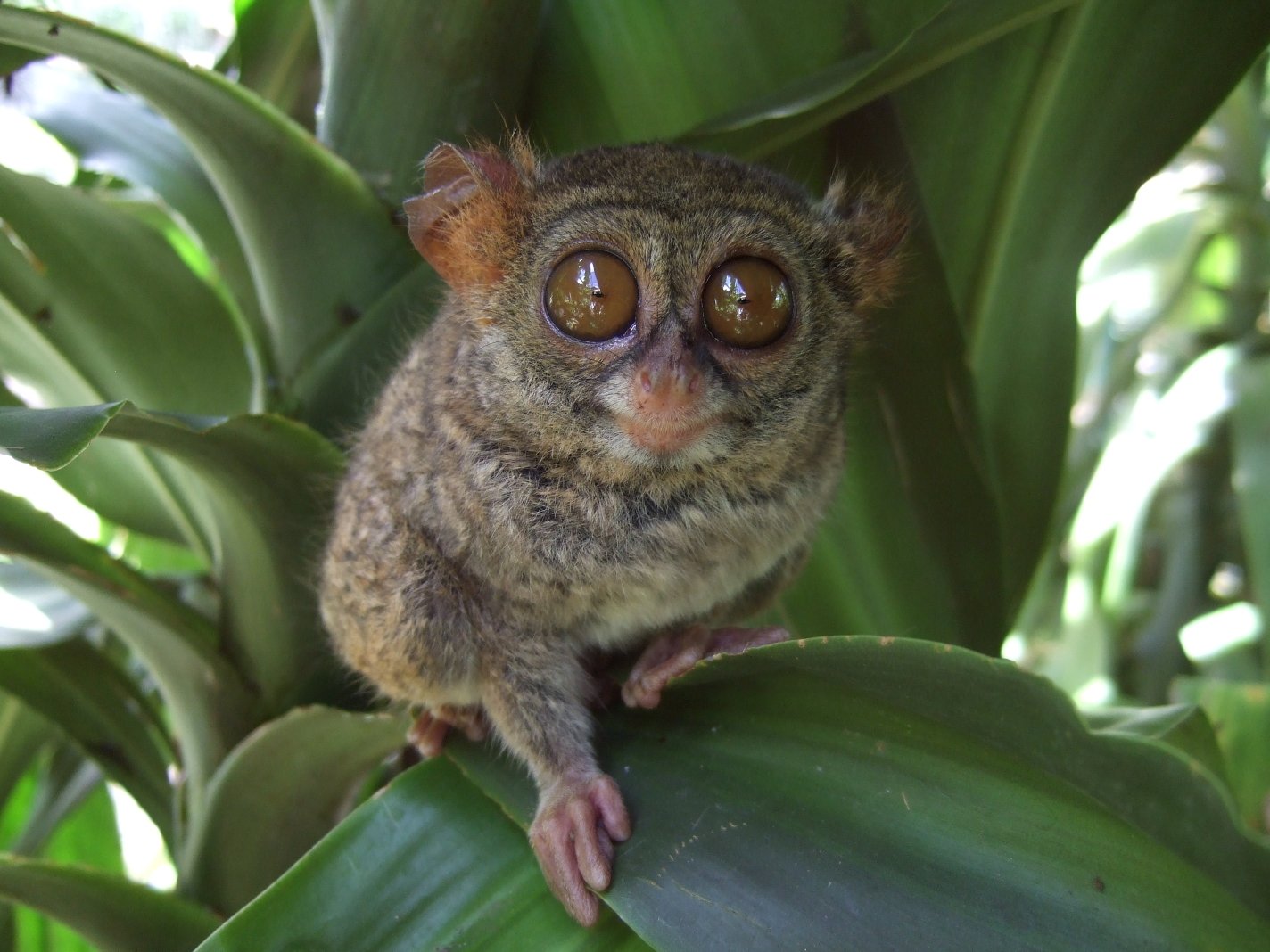
Tarsiers occupy a unique spot in the primate family tree. They are neither monkeys nor apes, but rather a separate branch that split off early in primate evolution. Their closest relatives are the lemurs and bush babies found in Africa, though tarsiers themselves are only found in Southeast Asia. This evolutionary isolation has made tarsiers a fascinating subject for scientists trying to unravel the mysteries of primate ancestry. Their unusual mix of traits—both primitive and modern—offers valuable clues about how other primates, including humans, evolved.
Camouflage and Defense: Surviving the Jungle
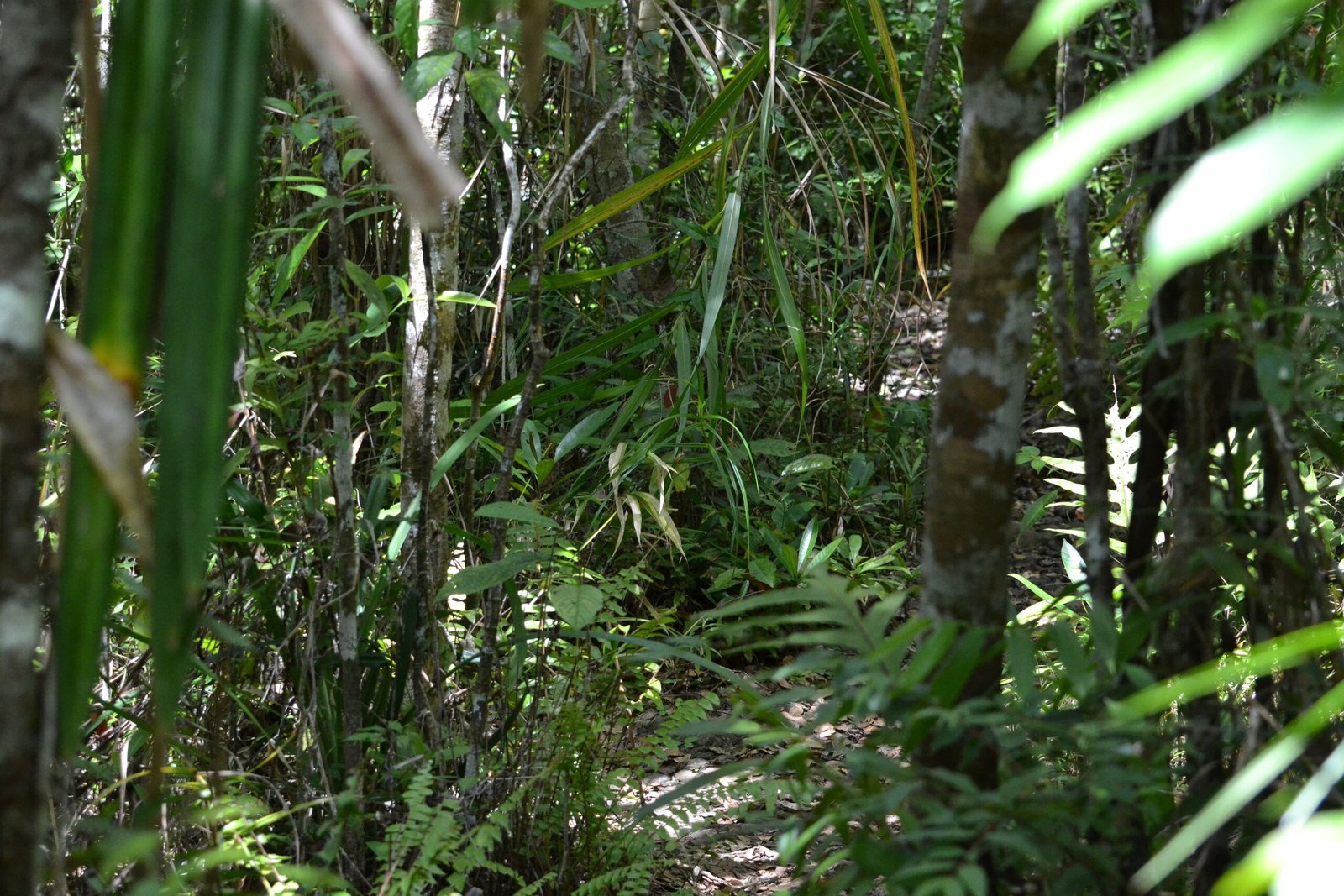
Survival in the jungle is no small feat, and tarsiers have developed some clever tactics to avoid becoming someone else’s dinner. Their fur, usually a mix of gray and brown, helps them blend seamlessly with tree bark and shadows. When threatened, a tarsier may freeze completely, relying on its camouflage to go unnoticed. If escape is necessary, a tarsier can vanish into the treetops with a single leap, leaving predators bewildered. Sometimes, their alarm calls can even startle predators and warn other tarsiers nearby.
Habitats: Home Among the Trees
Tarsiers are creatures of the forest, preferring dense, tangled jungles where they can hide and hunt with ease. They are arboreal, meaning they spend most of their lives off the ground, leaping from branch to branch in search of food and shelter. Different species have different habitat preferences—some thrive in primary rainforests, while others can survive in secondary forests or even plantations. The common thread is always the presence of trees, which provide both protection and a buffet of insects.
Threats in the Modern World
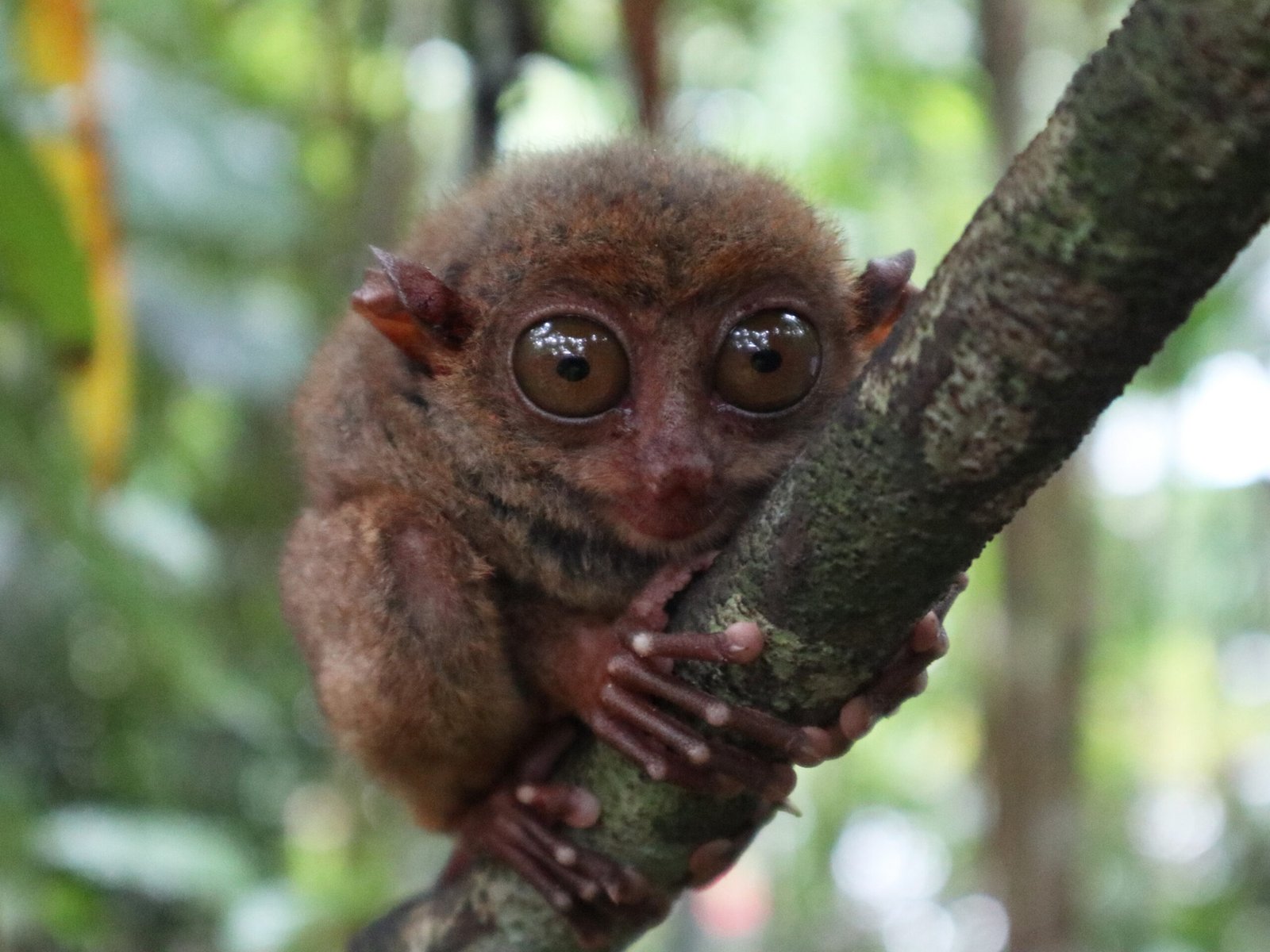
Despite their incredible adaptations, tarsiers face a host of threats today. Habitat loss is the biggest danger, as forests are cleared for agriculture, logging, and development. Some tarsier populations are also threatened by hunting and the illegal pet trade, where their unique appearance makes them a target. Climate change is another looming threat, altering the delicate balance of their forest homes. These pressures have pushed some tarsier species to the brink of extinction, making conservation efforts more urgent than ever.
Conservation Heroes: Protecting the Tarsier
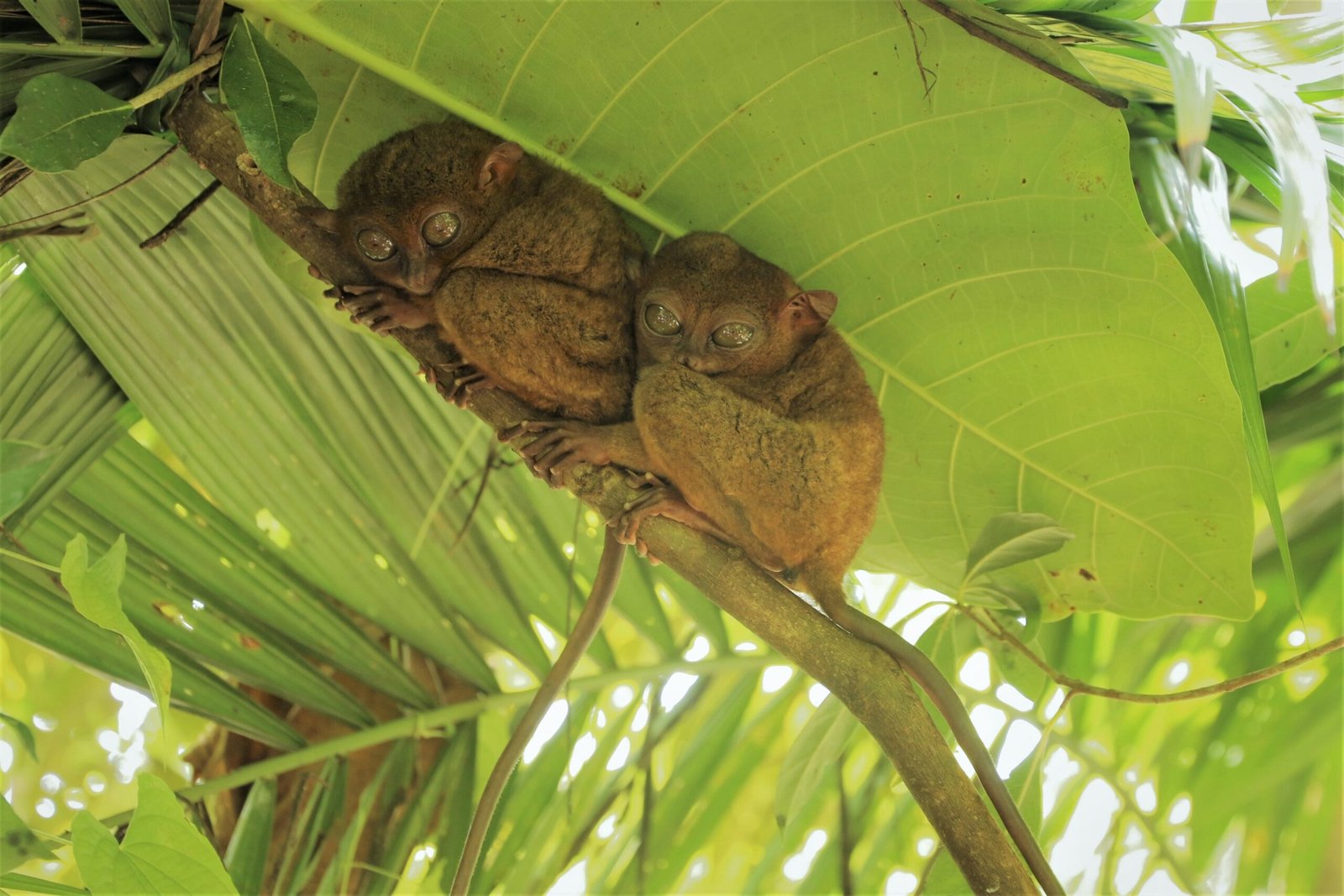
Across Southeast Asia, conservationists are working tirelessly to save the tarsier from extinction. Protected areas and national parks have been established to safeguard remaining habitats. Education programs help local communities understand the importance of tarsiers and the forests they call home. Some groups even rescue tarsiers from the pet trade, rehabilitating and releasing them back into the wild. Every effort counts, because losing the tarsier would mean losing a vital piece of the planet’s evolutionary puzzle.
Cultural Significance: Tarsiers in Local Lore
In many parts of the Philippines and Indonesia, tarsiers hold a special place in local culture and folklore. Some stories describe them as mystical guardians of the forest, while others see them as omens or symbols of good luck. These cultural connections have helped raise awareness about the tarsier’s plight and inspired new generations to care for their natural heritage. The tarsier’s wide-eyed stare has become an icon, appearing in art, literature, and even tourism campaigns.
Scientific Discoveries: What We’re Still Learning

Despite decades of research, tarsiers remain full of surprises. Recent studies have uncovered new species, each with its own unique characteristics and behaviors. Scientists are also using advanced technologies—like night-vision cameras and genetic analysis—to learn more about tarsier social structures, vocalizations, and evolutionary history. Every discovery adds another layer to our understanding of these remarkable animals, reminding us that nature’s mysteries are far from solved.
Tarsiers and Ecotourism: A Double-Edged Sword
Tarsiers have become a major draw for eco-tourists, eager to catch a glimpse of their famous eyes and nighttime antics. While responsible tourism can support conservation efforts and local economies, too much attention can sometimes harm the very creatures we love. Flash photography, loud noises, and habitat disturbance can stress tarsiers and disrupt their natural behaviors. Finding the right balance is key—allowing people to connect with nature while ensuring tarsiers remain wild and free.
Why the Tarsier Captivates Us
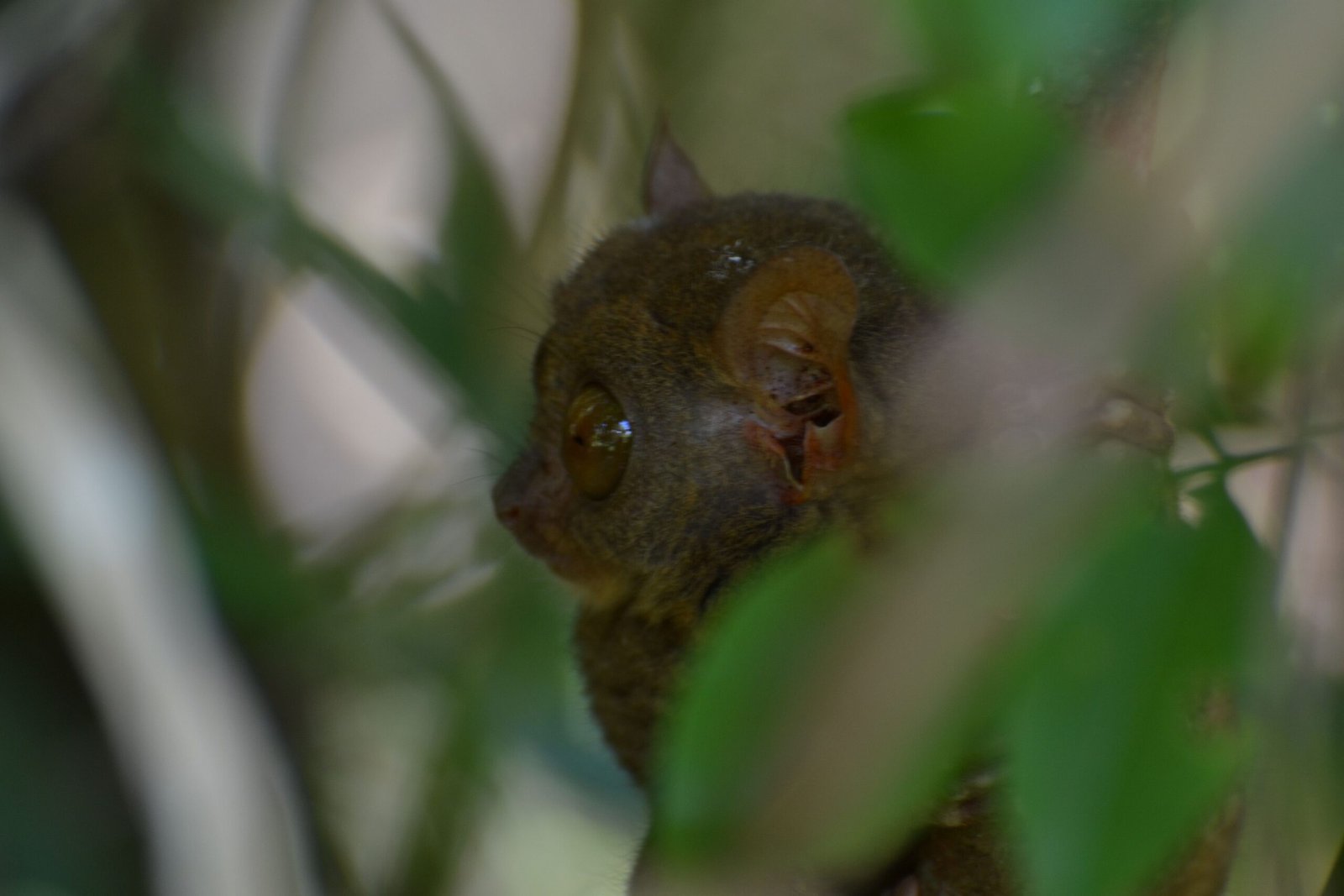
There’s something deeply enchanting about the tarsier—maybe it’s those soulful eyes that seem to hold a thousand secrets, or the way they move with such quiet confidence through the darkness. For many people, seeing a tarsier in the wild is a once-in-a-lifetime experience, a reminder of the wild magic still left in our world. The tarsier challenges us to look closer, to appreciate the beauty and complexity hidden in the shadows. It’s a living testament to the wonders of evolution and the fragile miracle of life on Earth.
Key Takeaways from the Tarsier’s World
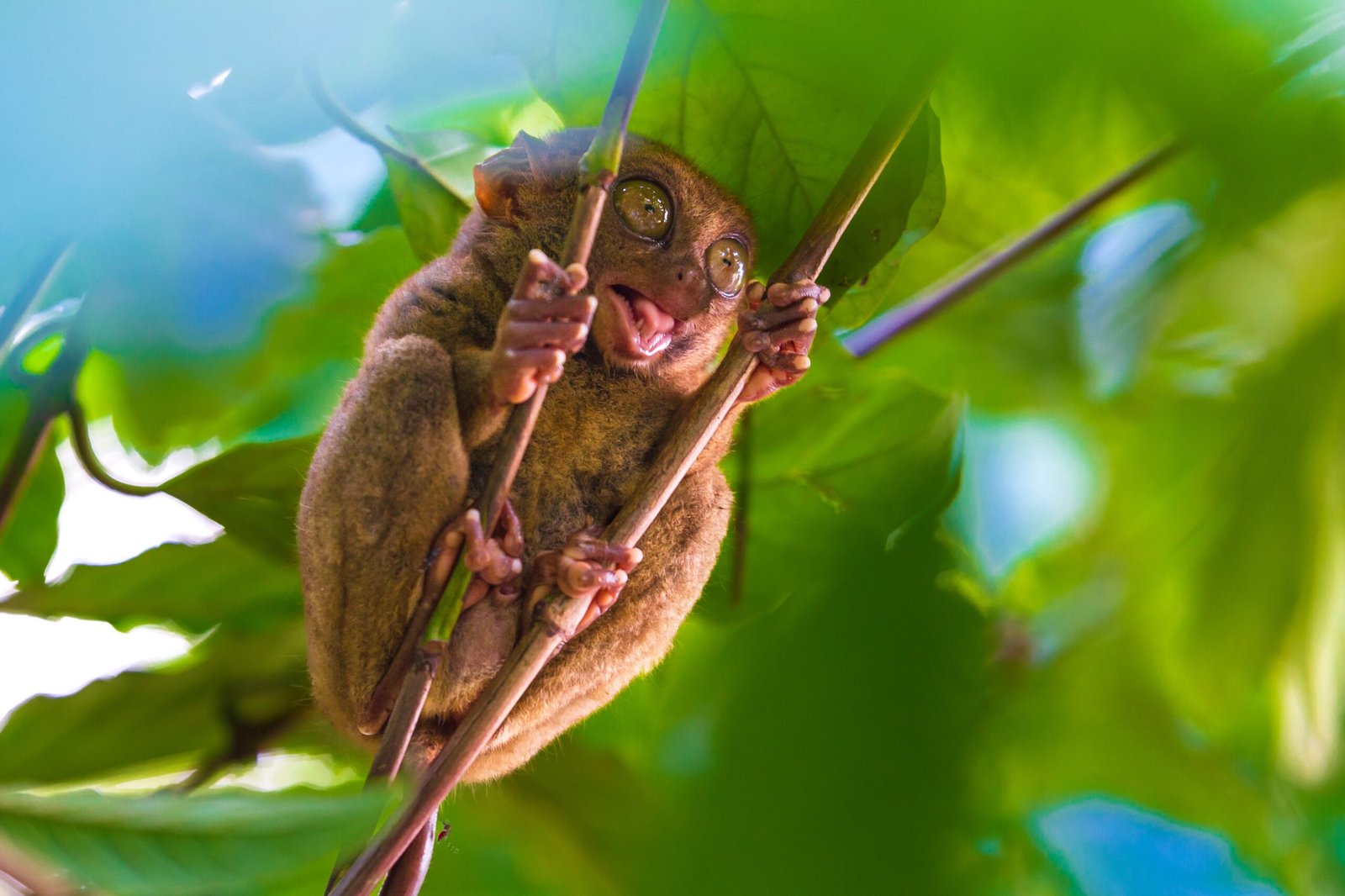
The tarsier’s story is one of survival, adaptation, and wonder. These tiny primates remind us that even the smallest creatures can have an outsized impact on our imaginations and our understanding of the natural world. From their gravity-defying leaps to their haunting calls, tarsiers are living proof that evolution is a master artist, crafting masterpieces on every branch. As we face the challenges of a changing planet, the tarsier’s resilience and beauty inspire us to protect what remains wild and precious.




